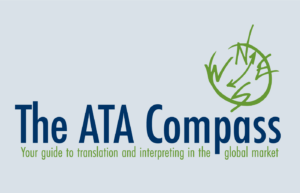The Spanish to English Translation Process: A Translator’s View

As an ATA certified Spanish-to-English translator specializing in medical and marketing translation as well as official documents, my job is not just to change words from one language to another; it’s about bridging cultures and connecting worlds. I have been a translator since 2006, and in this blog, I want to invite you into my process for bringing a Spanish to English translation to life, offering a behind-the-scenes look at how I transform Spanish texts into their English counterparts with accuracy and cultural sensitivity.
What Goes Into Spanish to English Document Translation?
Step 1: Receiving a Translation Request and Providing a Quote
The translation process for me begins when I receive an inquiry from a potential client in my email inbox. To provide an accurate quote for their translation, I need to see the Spanish documents to be translated into English and understand the client’s requirements, such as timeline and formatting.
I take into account the client’s specifications for the project in putting together my estimate. I know that time is a precious commodity these days, so I try to respond with a quote within a few hours.
Step 2: Confirming the Project
If the client is happy with my quote, they will provide confirmation that they want me to proceed with the translation. I will then collect payment up front, or we will sign a contract specifying other payment terms.
At this point, I let the client know any other questions I have about their goals for the translation. These might include:
- Who is the target audience?
- Are there any other materials I should maintain consistency with (such as other similar documents, a website, other marketing material)?
- Other specific details, like preferred date format or how to handle proper names.
Having completed this step, I can finally begin work on the translation itself.
Step 3: Understanding the Context
The translation process starts with a thorough understanding of the source text. This means first reading the text as a whole as if I were a member of the target audience. Next, I will put on my translator hat and read it again to identify any potential translation challenges. These may include challenging terms or expressions, cultural subtleties, stylistic factors, or even questions regarding meaning or ambiguities that I need to clarify with the client.
Step 4: The First Draft
Armed with a thorough understanding of the original text, I can now start translating the text from Spanish into English. My focus is on conveying the true meaning of the original Spanish—without removing or adding anything—while also capturing the essence, tone, and style of the original content.
Step 5: Cultural Localization
To transmit the full meaning of the original text, it is important to consider the cultural context behind the words. The translated text must be as relevant, appropriate, and engaging for the English-speaking audience as the original text was for the Spanish-speaking audience.
In this step, I determine the best way to handle things like idioms, jokes, units of measure, pop culture references, and more. For this reason, it is important that the translator is well-versed in both the source and target cultures, taking into account that culture is often highly regional (that is, a cultural reference that resonates with English speakers in the US may not land with English speakers in Australia).
Step 6: Refining and Perfecting
At this step, I have the bones of the translation, but there are still several rounds of meticulous editing and proofreading to go. This stage is all about polishing the text to achieve grammatical perfection, consistent terminology, and natural fluency. My goal is to produce a translation that reads as if it was originally written in English.
Step 7: Ensuring Quality
The last step is a comprehensive quality check. I review the translation against the original Spanish text, ensuring no meaning has been lost or altered. In many cases, I work with another Spanish to English translator to proofread my work to ensure that the translated content meets the highest quality standards.
Step 8: Delivering the Translation
Once the translation is complete, I simply email the final product to my client in the format they requested. For official document translations, I also send a Certificate of Accuracy.
Clients often ask me if they need to send me hard copies of the original documents, or request that I mail them printed versions of the finished translations. The good news is that in 2023, we can complete the entire process of Spanish to English translation online, with no need to exchange paper copies.
The Reality of Good Spanish to English Translations
And there we have it–a journey through a Spanish to English translation from start to finish, culminating in the arrival of a meticulously crafted English translation to the client’s inbox. This is just my process; every translator has their own workflow, but I wanted to give you this peek behind the curtain to show the dedication and care required to produce a quality translation. As a translator, I am committed to breathing life into my client’s messages, ensuring they resonate just as powerfully in English as they did in Spanish.
Whether you’re translating a website, legal document, or marketing content, it’s crucial to engage professionals skilled in Spanish to English translation. Our expertise ensures that your message has the impact you intended. You can find a qualified Spanish to English translator in the American Translators Association Directory.
By Ingrid Holm
About the Author
 Ingrid Holm, CT is an ATA-certified Spanish to English translator specializing in medical translation and subtitling with over 15 years of experience, as well as a business coach for other freelancers. She is also an active volunteer for the American Translators Association. The American Translators Association represents almost 9,000 translators and interpreters in more than 100 countries. To hire a translation or interpreting professional, please visit www.atanet.org/directory.
Ingrid Holm, CT is an ATA-certified Spanish to English translator specializing in medical translation and subtitling with over 15 years of experience, as well as a business coach for other freelancers. She is also an active volunteer for the American Translators Association. The American Translators Association represents almost 9,000 translators and interpreters in more than 100 countries. To hire a translation or interpreting professional, please visit www.atanet.org/directory.
Language Services Directory
Subscribe to The ATA Compass
Connect with The ATA Compass
Recent Posts
Find a Translator or Interpreter Near You
Searching for a Nearby Translator or Interpreter? Whether you require accurate document translations, real-time interpreting for an event, or specialized industry expertise, finding the right professional near you has never…
Read MoreWhy You Should Use a Certified Translator or Interpreter
Choosing a Certified Professional is the Smart Choice A certified translator or interpreter ensures effective, accurate, and culturally sensitive communication that truly bridges the gap between languages and cultures. Accuracy…
Read MoreThe ATA Compass
Want to reach more customers, grow your business, and improve your bottom line? The ATA Compass publishes articles and provides resources to show you how language professionals can help you…
Read MoreKnow Your Rights to Language Access
Is English Not Your Primary Language? If you have a limited ability to read, write, speak, or understand English, you are considered to be Limited English Proficient (LEP). As an…
Read MoreWhy Should I Hire a Professional?
It takes more than just the ability to understand two languages. Professional translators and interpreters have the education, experience, and expertise to understand the nuances in one language and transfer…
Read MoreTranslator vs. Interpreter
Watch a Day in the Life of Translators and Interpreters See how translators and interpreters work in this short animated video. Translators do the writing Translators work with the written…
Read More






